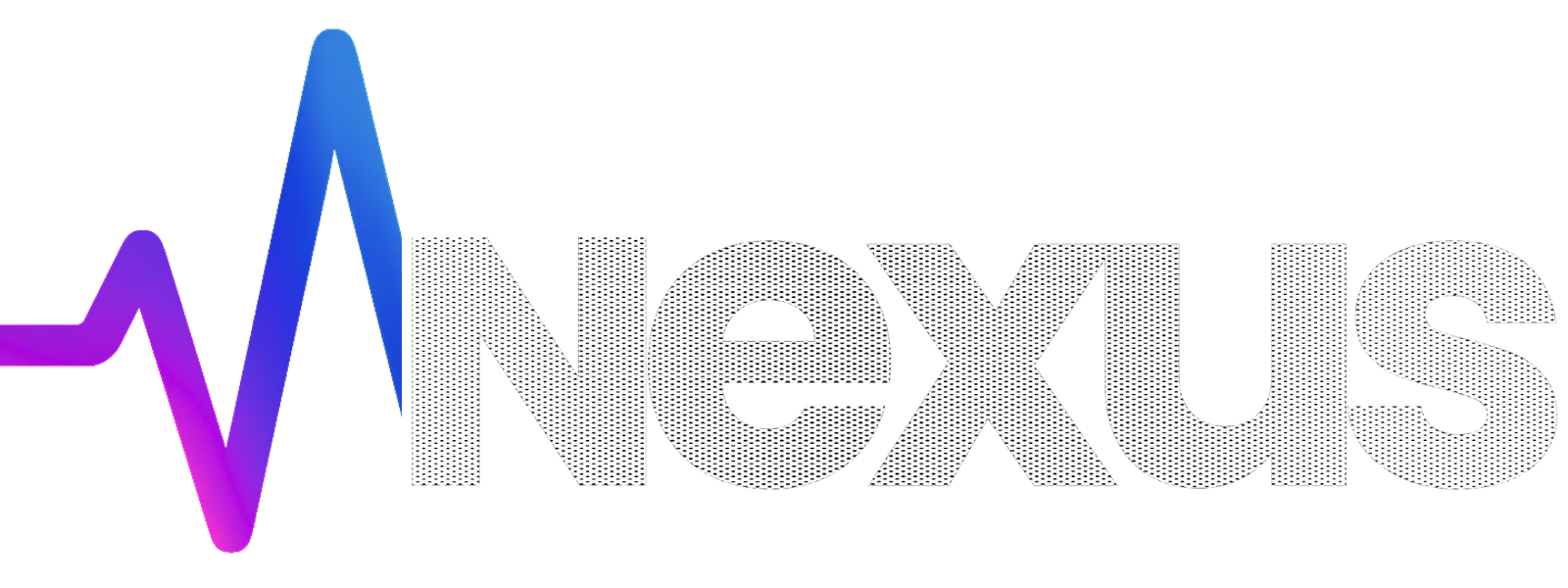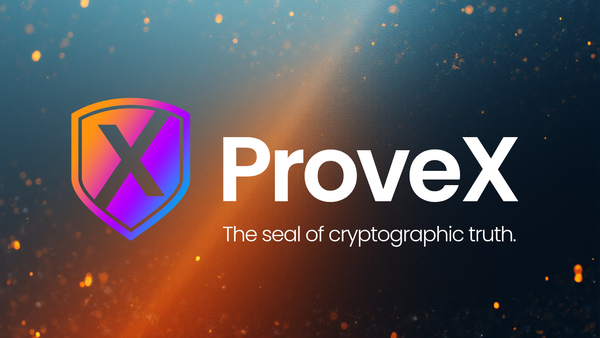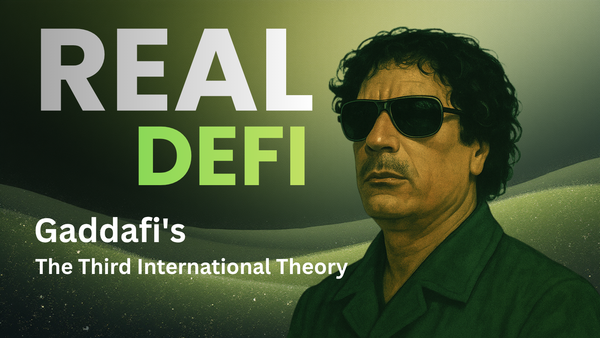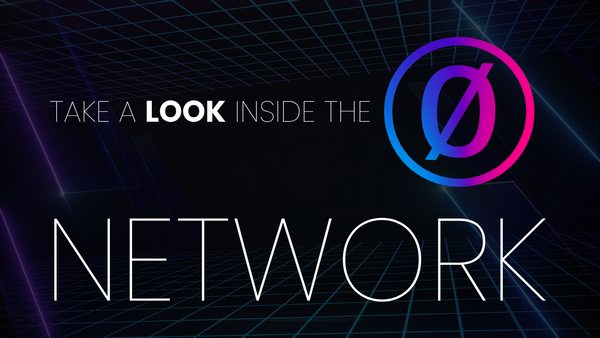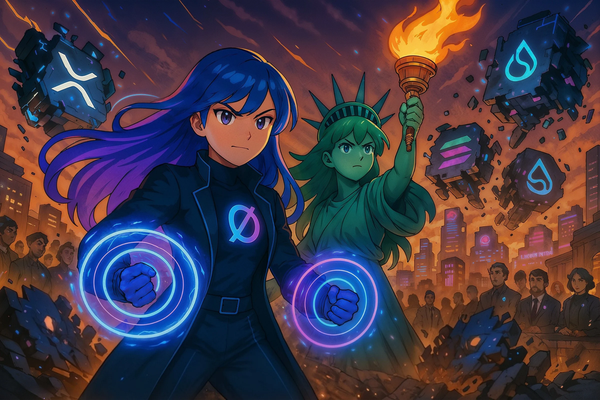The Real Crypto Revolution: What They Don’t Want You to Understand
This led to chains and tokens designed not for freedom, but for profit extraction. Centralized exchanges popped up, offering ease of use—but at a cost. Now you needed to hand your crypto to middlemen again. We went full circle.
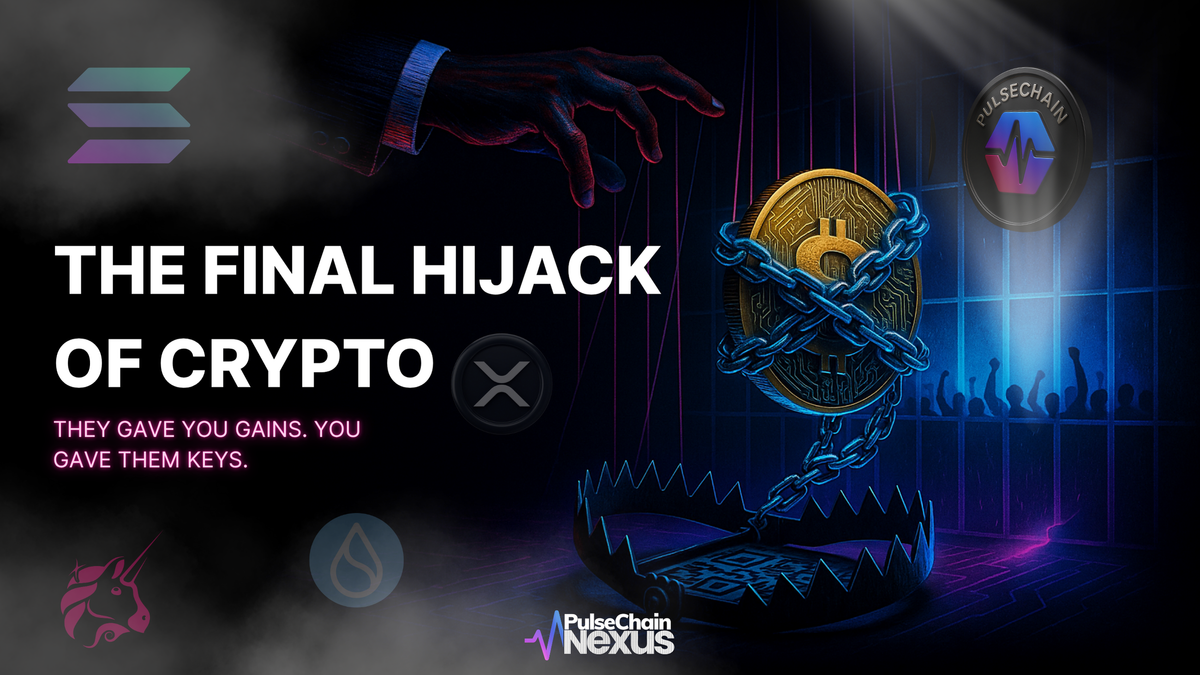
In 2008, the world was crumbling.
Banks were collapsing. Economies were teetering. Trust in governments and financial institutions was shattered.
Amid this chaos, a mysterious figure named Satoshi Nakamoto published a whitepaper titled Bitcoin: A Peer-to-Peer Electronic Cash System.
It wasn’t just a document—it was a declaration of independence from the broken systems that governed our money.
Satoshi’s idea was simple—but revolutionary:
What if we didn’t have to trust humans to manage money anymore?
What if we could trust code instead—open source code that anyone could verify, that operated transparently and without bias?
What if we could create digital cash that didn’t require banks, middlemen, or centralized control?
Thus, Bitcoin was born.
Not as a tech fad or a get-rich-quick scheme—
but as a rebellion.
The Rebellion Had Roots
Long before Bitcoin, there was a group known as the cypherpunks— digital anarchists who believed in privacy, encryption, and individual sovereignty.
They saw what was coming:
A future where our money, data, and freedom would be digitized and controlled by a handful of corporate and governmental overlords.
They knew:
If value was going to live on the internet, it needed to be trustless.
What Does “Trustless” Mean?
Trustless means you don’t have to trust anyone.The system is built so you can verify it yourself—
no banks, no third parties, no human approval. Just math and open code that always works the same.
Bitcoin was the first true trustless system. It allowed anyone, anywhere, to send money to anyone else—
without asking permission.
Without going through a bank.
It was slow. It was simple.
But it worked.
But Even Bitcoin Isn’t Immune
Most people don’t realize: Bitcoin has developers.
A small group of people who maintain and upgrade the protocol.
The codebase has already been changed many times.
While there's resistance to altering its fundamentals, the fact remains:
Bitcoin is not immutable.
It is governed by human consensus.
And where there are humans, there is politics, pressure, and control.
That should concern anyone who thought Bitcoin was beyond interference.
When Satoshi disappeared, Bitcoin didn’t stay frozen.
New developers stepped in. With them came new ideologies.
The original vision—peer-to-peer cash—got lost.
Instead of fast, everyday money for the world,
Bitcoin was turned into “digital gold”—
a slow, clunky asset meant to store value, not move it.
The Dream Was Altered
Who were these developers? Why didn’t Bitcoin stay on its original path?
We may never know all their names, but it’s fair to say some were nefarious actors— influenced by governments, corporations, or other hidden interests.
Then came the rest.
Enter the VCs
As crypto evolved, the dream got hijacked again.
Venture Capitalists—large firms or wealthy investors— saw the explosive growth of crypto and jumped in. But VCs don’t just invest. They demand control. They want tokens, leverage, and backdoors. This meant influencing development, pushing centralization, and ensuring there was someone in charge they could pressure.
Chains and tokens were no longer built for freedom—
they were built for profit extraction. Centralized exchanges popped up, offering ease of use—
but at a cost.
Now you had to hand your crypto to middlemen again.
We went full circle.
Only this time, the bankers were wearing hoodies.
The Bait-and-Switch
Today, 99% of crypto newcomers get in through VC-funded chains and centralized exchanges.
They're lured by TV ads, influencers, and hype.
But what they’re really stepping into is a digital funnel— a carefully constructed pipeline not toward freedom, but toward control.
These fake cryptocurrencies, built on chains that can be paused, reversed, and surveilled,
share the same blueprint as what’s coming next:
What Are CBDCs?
Central Bank Digital Currencies are government-issued versions of digital money—like a digital dollar or pound.
But unlike cash, they are programmable.
That means:
- Every transaction can be tracked
- Spending can be restricted or revoked
- Your money becomes conditional
It’s the Trojan horse of our time.
While the public chases meme coins and NFTs,
a silent infrastructure is being built beneath them—
one that looks like crypto, but acts like surveillance.
That Brings Us to Richard Heart
One of the few voices left from the original cypherpunk ethos.
Richard saw this coming:
- The compliance
- The freezing functions
- The government handshakes
And he said no.
He became a builder of code-is-law systems.
His creations are about trustless, immutable smart contracts—
systems where middlemen don’t exist.
What Does “Immutable” Mean?
Immutable means unchangeable.
In crypto, it means the code can’t be altered after launch.
Not even by the creator.
In projects like HEX, the smart contract is deployed and then the keys are destroyed.
This is called burning the keys.
No one can pause it. No one can reverse it.
It’s just you and the code.
What Is Self-Custody?
When you hold your own crypto, you use something called a wallet—like MetaMask.
But it’s not really a wallet.
It’s a window into the blockchain—a giant, global spreadsheet.
Nothing moves.
Your keys (24 words) are what give you access to your place on the spreadsheet.
If your funds are on a centralized exchange, you don’t own them.
The exchange does.
If they go bankrupt or get hacked, you lose everything.
This isn’t just about security.
It’s about direction.
The noise, the hype, the distractions—
they bury the real projects.
The ones that threaten central banks, Wall Street, and the Fed.
What Is a Layer 1 Blockchain?
A Layer 1 blockchain is the base network—
the foundation for everything built on top.
Bitcoin and Ethereum are Layer 1s.
PulseChain is a new Layer 1—
faster, cheaper, and more accessible than Ethereum.
And it’s where real decentralization is being brought to life.
The SEC Tried to Stop It
Who is the SEC?
The U.S. Securities and Exchange Commission.
They regulate investments and often target crypto projects.
Richard Heart beat them.
Not through loopholes—
but because his creations are code, not companies.
There was nothing to grab.
No admin. No boardroom. Just immutable code.
It was a massive win for DeFi—
though most of the media won’t report it.
What Is DeFi?
DeFi = Decentralized Finance
Rebuilding financial tools—like lending, saving, and trading—
without banks or middlemen.
Just pure, self-executing code.
True DeFi means:
- No admins
- No switches
- No censorship
So Now's the Time
If you believe in:
- Self-sovereignty
- Systems that can’t be gamed, corrupted, or shut down
- A financial future that doesn’t rely on trust, but on verifiable truth
Then welcome to the other side.
Welcome to PulseChain.
— Veritya Thalassa
Follow me on X: @i_am_veritya
